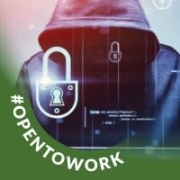LogRhythm SIEM Platform is an award-winning platform in security analytics. With more than 4,000 customers globally, LogRhythm SIEM is an integrated platform that helps security operations teams protect critical infrastructure and information from emerging cyberthreats. Ultimately, LogRhythm SIEM is an integrated set of modules that contribute to the security team’s fundamental mission: rapid threat monitoring, threat detection, threat investigation, and threat neutralization. LogRhythm SIEM is for organizations that require an on-premises solution and offers:



| Product | Market Share (%) |
|---|---|
| LogRhythm SIEM | 3.1% |
| Wazuh | 10.9% |
| Splunk Enterprise Security | 9.3% |
| Other | 76.7% |
| Type | Title | Date | |
|---|---|---|---|
| Category | Security Information and Event Management (SIEM) | Sep 17, 2025 | Download |
| Product | Reviews, tips, and advice from real users | Sep 17, 2025 | Download |
| Comparison | LogRhythm SIEM vs Splunk Enterprise Security | Sep 17, 2025 | Download |
| Comparison | LogRhythm SIEM vs Wazuh | Sep 17, 2025 | Download |
| Comparison | LogRhythm SIEM vs Microsoft Sentinel | Sep 17, 2025 | Download |
| Title | Rating | Mindshare | Recommending | |
|---|---|---|---|---|
| CrowdStrike Falcon | 4.3 | 4.3% | 97% | 135 interviewsAdd to research |
| Wazuh | 3.7 | 10.9% | 80% | 49 interviewsAdd to research |
| Company Size | Count |
|---|---|
| Small Business | 31 |
| Midsize Enterprise | 33 |
| Large Enterprise | 66 |
| Company Size | Count |
|---|---|
| Small Business | 307 |
| Midsize Enterprise | 212 |
| Large Enterprise | 524 |
● Streamlined workflow
● Secure data access
● Real-time visibility
● A unified user experience
● Management customization
Security information and event management (SIEM) solutions have been evolving for over a decade; their core functionality still acts as the most effective foundation for any organization’s technology stack. A SIEM solution enables an organization to centrally collect data across its entire network environment to gain real-time visibility into activity that may pose a risk to the organization. SIEM technology addresses threats before they become significant financial risks while simultaneously helping better manage an organization’s assets.
LogRhythm SIEM has many key features and capabilities, including:
● High-Performance Log Management: LogRhythm SIEM offers structured and unstructured search capabilities which allows users to swiftly search across an organization’s vast data to easily find answers, identify IT and security issues, and troubleshoot issues. Users can efficiently process and index terabytes of log data daily.
● Network and Endpoint Monitoring: Forensic sensors allow users to gain deep visibility into endpoint and network activity. Users can see behavioral anomalies and better respond to incidents.
● SmartResponse™ Automation: LogRhythm SIEM allows users to centrally execute pre-staged actions that automate incident investigatory tasks and responses.
● Automated Machine Analytics: LogRhythm SIEM's AI Engine continuously analyzes all collected security incidents and forensic data. Security teams are delivered precise, real-time intelligence about risk-prioritized threats.
● Case and Security Incident Management: LogRhythm SIEM offers an integrated workflow so that threats don’t slip through the cracks. Collaboration tools help centrally manage and track investigations.
● User and entity behavior analytics (UEBA): Embedded deterministic UEBA monitoring helps protect against insider threats.
● Security orchestration, automation, and response (SOAR): LogRhythm SIEM includes our embedded SOAR solution to increase efficiency and higher-quality incident response with low mean time to response (MTTR).
Benefits to Using LogRhythm SIEM
● The platform offers great value to security and IT operations. Users have the ability to map their security and IT operations to existing frameworks such as NIST and MITRE ATT&CK.
● The platform offers broad integration across security and IT vendors: Users benefit from support for integration with hundreds of security and IT solutions. In turn, this further extends SIEM capabilities and data collection.
● The platform provides compliance adherence, enforcement, and reporting: The prebuilt compliance modules automatically detect violations as they occur and remove the burden of manually reviewing audit logs.
Reviews from Real Users
LogRhythm SIEM stands out among its competitors for a number of reasons. Two major ones are its ability to be customized and its quick performance of queries.
Jason G., a senior cybersecurity engineer, writes, "I have found the Advanced Intelligence Engine has provided the most value to us because we can customize alarms based on our requirements and have created hundreds of alarms that notify different people for different scenarios."
Andy W., principal consultant at ITSEC Asia, notes, “LogRhythm SIEM covers all our primary security analysis needs. It makes it easier for us to analyze threats and improves our response times. It's a versatile platform that performs queries fast compared to other SIEM solutions.”
LogRhythm SIEM was previously known as LogRhythm NextGen SIEM, LogRhythm, LogRhythm Threat Lifecycle Management, LogRhythm TLM.
Macy's, NASA, Fujitsu, US Air Force, EY, Abbott, HD Supply, SAB Miller, UCLA, Raytheon, Amtrak, Cargill
| Author info | Rating | Review Summary |
|---|---|---|
| Cyber Security Analyst at Diyar United Company | 3.5 | I work with LogRhythm SIEM mainly in detection engineering. The tool is customizable and easier than QRadar but can be unstable. Improvements are needed in parsing techniques. Despite limitations, it provides significant resource savings of around 30%. |
| Security Engineer at Granicus Inc. | 3.5 | I've used LogRhythm SIEM for five years; it's effective for log retention and threat detection, with useful custom parsing and alert features, though it lacks storage visibility, full device support, and struggles with resource use in large environments. |
| Product Development - Security Solutions Manager at Aplikanusa Lintasarta | 4.5 | I primarily use LogRhythm SIEM in the financial sector for its strong machine-learning capabilities, seamless integration, and user-friendly interface, though its SOAR features need improvement. My clients appreciate its secure, cost-effective environment and scalability. |
| Senior Security Consultant at ITSEC Asia | 3.5 | I use LogRhythm SIEM primarily in Indonesia for government agencies requiring an on-prem solution. It's comprehensive, also offering EDR and XDR. However, it's slow, especially when retrieving logs with multiple filters using Logstash. |
| Cyber Security Senior Consultant at Inspira Enterprise | 4.0 | I use LogRhythm SIEM for event monitoring due to its excellent dashboard and smooth operation, making event analysis easy. However, integration with other technologies is challenging, and its backend and technical support could improve compared to IBM QRadar. |
| Network and Security Specialist at Ajman Digital Government | 4.0 | I use LogRhythm SIEM to enhance threat detection and response capabilities, appreciating its easy configuration, user behavior analysis, and compliance features. It provides better ROI than Splunk, though improvements in custom dashboard tools are needed for security. |
| Associate - Security Operations Centre analyst at a security firm with 5,001-10,000 employees | 3.5 | I use LogRhythm SIEM for security monitoring and event management, appreciating its alert management and backup features. However, it needs better data manipulation and dashboard configuration. It's cost-effective but less modern compared to Azure Sentinel or Splunk. |
| System Administrator at GOLDENWEST FEDERAL CREDIT UNION | 4.5 | No summary available |